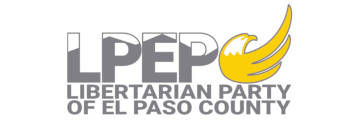Bylaws Committee
LPEPC Staff Liaison Education Director
Terms of Office 1 year term; renewable at Annual Convention. The Committee Members serve until the conclusion of the Annual Convention after which it was appointed, unless the Committee is dissolved by the Board of Directors in accordance with the Bylaws.
Committee Makeup
The Bylaws Committee Chair shall be a Contributing Member.
The Committee Members shall also be Party Members that shall be appointed by the Board of Directors by majority vote.
Mission Statement
The Bylaws Committee maintains the consistency and content of the LPEPC Bylaws in conjunction with the Party’s activities.
The Committee shall be familiar with the activities of the Party and the content and consistency of the Bylaws.
The Committee shall endeavor to make certain that Party activities are consistent with the LPEPC Bylaws, and with the LPUS and LPCO Bylaws where applicable.
Reporting
The Bylaws Committee Chair makes reports monthly at the Board of Directors meeting.
The Bylaws Committee Chair makes a yearly report at the Annual Convention.
The Bylaws Committee Chair may be appointed to serve as the LPEPC representative to the LPCO Bylaws Committee; they will then need to report to the LPCO Bylaws Committee as needed.
Committee Meetings
One in-person meeting per year at Annual Meeting; any Special Convention; all Board Meetings; all Monthly Member meetings.
Committee Meetings shall be held as needed, in person or online.
The LPEPC Representative to the LPCO Bylaws Committee will need to attend LPCO Bylaws meetings as needed and the LPCO Convention once per year.
Estimated Time Commitment
Bylaws Committee Chair: 12+ hours per year
Bylaws Committee Member: 8+ hours per year
Qualifications/ Responsibilities
Committee Chair:
- The Bylaws Committee Chair should have prior work within the Libertarian Party and have a general familiarity with the structure of LPEPC and parliamentary procedure.
- The Bylaws Committee Chair reviews information pertinent to LPEPC Bylaws and leads the discussion among committee members during Bylaws Committee meetings.
- The Bylaws Committee Chair ensures that the Bylaws Committee Report, with the assistance of the Staff Liaison, is promulgated to the Membership at least fourteen (14) days in advance of the Annual Convention (or Special Convention if so designated).
- The Bylaws Committee Chair must be familiar with and review the Bylaws of the LPUS and LPCO to maintain consistency with them where required.
- The Bylaws Committee Chair will also present the Bylaws Committee Report, one item at a time, to the Membership at the Annual Convention (or Special Convention if so designated).
- The Bylaws Committee Chair will also present for approval to the Board of Directors from time to time a Stylistic Changes Report.
- The Bylaws Committee Chair also serves as the LPEPC Bylaws Committee Representative on the LPCO Bylaws Committee.
- The Bylaws Committee Chair shall also advise the Board of Directors on issues and actions concerning the Bylaws as they arise.
- The Bylaws Committee Chair will keep a continuity binder detailing the historical versions of the Bylaws and all Committee reports and this Committee and job descriptions, kept updated with the Committee?s current work.
Committee Members:
- Bylaws Committee Members should have good communication skills and familiarity with LPEPC Bylaws.
- Bylaws Committee Members participate in discussion regarding all proposed Bylaws amendments.
- Bylaws Committee Members must be familiar with and review the Bylaws of the LPUS and LPCO to ensure the LPEPC Bylaws maintain consistency with them where required.
- Bylaws Committee Members are responsible for bringing issues pertaining to each Article of the Bylaws to the full Committee.
- Bylaws Committee Members are responsible for relaying or proposing LPEPC Bylaws amendments and discussions to the full Committee.
Amendments
Substantive Amendments: A Substantive Amendment to the Bylaws is an amendment to the Bylaws that affects the operations of the Party or the meaning of the Bylaws. The Committee shall make appropriate recommendations for Substantive Amendments to the Bylaws to the Membership at the Annual Convention (or Special Convention if so designated), in a written report in a standardized format.
Stylistic Changes: A Stylistic Change is and Amendment that is not substantive, such as typographical, spelling, capitalization, or punctuation errors, and format changes. The Committee may make appropriate recommendations for Stylistic Changes to the Bylaws, to the Board of Directors from time to time, or to the Members at the Annual Convention (or Special Convention if so designated), also in a written report in a standardized format.
The following was included in the Job Description Document by Mike Seebeck. It was copied into this page as written. The colors did not properly copy, but the original is available through the Secretary or the Bylaws Committee Chair.
ALL OF THE FOLLOWING SHOULD BE INCLUDED IN PROCEDURAL MANUAL /CONTINUITY BINDER, NOT ?JOB DESCRIPTION?
Recent Accomplishments
The Bylaws were ratified at the first Annual Convention of the LPEPC in August 2013.
The LPEPC Bylaws were also updated to reflect changes presented at the convention.
Report Format Template and General Procedures
In general, report text should be shown in ARIAL text, and Bylaws text should be shown in Times New Roman.
Page breaks should be inserted between proposals where practical; this serves to separate the proposals to avert confusion and allow Members space to write notes if they desire.
Additions to Bylaws should be notated in BOLD blue underline.
Deletions to Bylaws should be notated in BOLD red strikethrough.
Deletions should precede additions as much as possible for consistency.
Increase in font size for additions and deletions is suggested, especially for dealing with single punctuation errors.
If a change to a sentence requires more than one change, rewrite the entire sentence as an addition and delete the old one. This reduces Membership confusion.
Sections of an article not being proposed for amendment may be skipped; however, the numbering conventions must be maintained.
Multiple changes to the same Article, Section, or sentence must amend the original only.
A proposal may include more than one Article or Section, but it must be relevant to the problem to resolve. Single-subject only.
Proposals and pages shall be numbered.
Votes by the Committee on each proposal are required.
If the Bylaws Committee Report to the Members includes Stylistic Changes, then list those first.
All proposals shall be ordered in their sections (Stylistic Changes, Substantive Amendments) first by most votes received, then by Article.
Proposals that are not approved by the Committee shall not be written into the Report.
NO PEJORATIVE OR SUBJECTIVE LANGUAGE ALLOWED! Keep it professional and impartial.
EXAMPLE REPORT (3 pages) (Yes, the proposals and names are absurd, but that?s why it?s an example!):
(Page 1)
Bylaws Committee Report to the Membership
Libertarian Party of No Name, Colorado
Presented in Convention, Jan 1, 2014
Committee Members:
Ima Libertarian, Chair
Bud Weiser
Jack Daniels
Otto Fokus
Shirley Yewjest
Notation:
Report text is in ARIAL text.
Bylaws text is in Times New Roman.
Additions to Bylaws are notated in BOLD blue underline.
Deletions to Bylaws are notated in BOLD red strikethrough.
(Page 2)
Stylistic Changes
Proposal 1: Capitalize Libertarian Party in Article I.
(approved 5-0)
Proposed Text:
Article I. Name
The name of the organization shall be ?The libertarian party Libertarian Party of No Name, Colorado?
Proposal 2: Period is missing at end of Article I.
(approved 4-1)
Proposed Text:
Article I. Name
The name of the organization shall be ?The libertarian party of No Name, Colorado.?
(Page 3)
Substantive Amendments
Proposal 3: Change membership requirements
(Passed 3-2)
Problem: Current membership standards allow anyone to join the Party who has no brains and $25 to their name. This dilutes the principles of the Party and leads it to be no better that the Democrats or Republicans.
Proposed Solution: Set dues to $1000 and change membership requirements in Article III.
Proposed Text:
Article III. Membership
3.1 A person may become a Member upon registering as a Libertarian with the county clerk, approval of a membership application submitted to the Board, and remittance of the membership fee.
3.1 A person may become a Member upon registering as a Libertarian with the county clerk, approval of a membership application submitted to the Board, running naked down Main Street at noon while brandishing an AK-47 and singing My Country Tis of Thee, and remittance of the membership fee of $1000.
or
Article III. Membership
3.1 A person may become a Member upon registering as a Libertarian with the county clerk, approval of a membership application submitted to the Board, running naked down Main Street at noon while brandishing an AK-47 and singing My Country Tis of Thee, and remittance of the membership fee of $1000.

